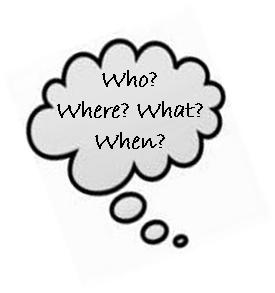Query Letters: When to send them and what to write.
 The single most important key to opening the door to an agent or acquisition editor is your query letter. You will only get a response if your reader is interested in knowing more about your book project.
The single most important key to opening the door to an agent or acquisition editor is your query letter. You will only get a response if your reader is interested in knowing more about your book project.
No response is a no. If you don’t receive a reply within a week, move on. Maybe there isn’t a match. Or, it may be your query letter falls flat. Before you send out hundreds of the same document and kill any chance your manuscript might have had, step back and revise your query letter.
No one will read a word of a manuscript unless your query letter convinces them you might have something to offer of interest.
 Your query letter should only be one page. Four paragraphs. No more.
Your query letter should only be one page. Four paragraphs. No more.
For fiction, don’t write a single query letter until you have a finished, polished, professionally edited manuscript. There is no room for drafts. Don’t waste your one chance. There are no revise and resubmits.
This is also true for the genre of memoir. Don’t send a query letter until you are ready to send a final version of the manuscript. Your proposal also needs to be ready to go when you hit the send button.
For nonfiction, prepare sample chapters and a full book proposal before you begin to make a list of who to query. Your proposal will include a bio, synopsis, expanded Table of Contents, comparative title analysis, marketing strategy, and writing sample. Don’t send a query letter until you are ready to send your full proposal and sample chapters.
 When you are ready to begin the query process, do your homework on who precisely you plan to query and their specific submission guidelines. Make sure you spell the name correctly and have their current title and email address. Visit their website and read their bio and peruse their social media professional persona. Review their profile on LinkedIn. Read trade news coverage about this person and what recent projects they have published. The first paragraph of your query letter depends on you explaining why you think this person will want your project.
When you are ready to begin the query process, do your homework on who precisely you plan to query and their specific submission guidelines. Make sure you spell the name correctly and have their current title and email address. Visit their website and read their bio and peruse their social media professional persona. Review their profile on LinkedIn. Read trade news coverage about this person and what recent projects they have published. The first paragraph of your query letter depends on you explaining why you think this person will want your project.
Customize each query letter.
 There should be four paragraphs. The first paragraph is crafted to a specific recipient. The remaining three paragraphs may be similar in content across recipients.
There should be four paragraphs. The first paragraph is crafted to a specific recipient. The remaining three paragraphs may be similar in content across recipients.
The second paragraph is your pitch and premise. What is your book about? This is the Hollywood pitch, the 30-second elevator speech, the hook and bait. For nonfiction you need to answer two questions for the reader. Who cares? And, so what?
In the third paragraph, provide your qualifications as an author. For fiction writers, mention where your work has previously been published, writing conferences, residencies, workshops, and awards. For nonfiction writer, provide your qualifications as an authority and why you are the best person to write the book. Identify the audience and how you are engaged in reaching these readers and turning them into book buying customers.
 Your final paragraph provide the specifics of word count/pages, status and availability of the manuscript, and contact information.
Your final paragraph provide the specifics of word count/pages, status and availability of the manuscript, and contact information.
The first paragraph is always the most challenging one to write. It’s about making a connection. Why do you think this person in particular will be interested? For this you need to learn about the intended reader. Did you go to the same college or university? Attend the same writer’s conference? Did you watch a YouTube interview with this person recently? Read an article they published? Were referenced in the Acknowledgements of a book you finished reading? Your uncle Henry went to high school with his sister? How do you know this person and why are you writing to them with this project? If you can’t make a case for it, perhaps you are not writing the right person.
 No response is a no. A no suggests you revisit your query and rework it to get a yes.
No response is a no. A no suggests you revisit your query and rework it to get a yes.
Need help with your query letter? Proposal? Manuscript or writing sample? Need a second look because there are no second chances? If yes, contact me.

Thanks for this lesson about query letters. It reminded me that I need to change my query letter now that I’m changing my whole manuscript, which required changing my whole proposal and premise. How to make more work for yourself – I should write a book. Cheers!
Wonderful article and still very relevant. Thank you!
Thanks Dionna for stopping by and glad you found it helpful.